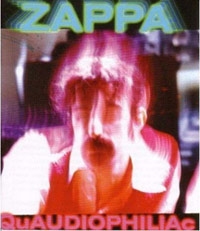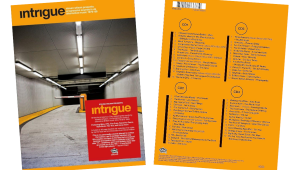Steven Wilson: Juke Box Jury of One Page 2

 |
The Beach Boys: "God Only Knows" Pet Sounds, DVD-Audio (Mark Linett)
Wilson:That didn't work for me in surround . . . and I'm trying to analyze why. . . .
Too much was behind me. It didn't work, did it? The mix is definitely loaded toward the back. Isn't there a theory that, in some sort of primal response, we are made to feel slightly uneasy by sounds that come from behind us?
Maybe it's something about the nature of this album. Brian Wilson's whole thing was about creating texture - blending all these ingredients to make one homogeneous texture. And suddenly, in the surround mix, pulling it apart in strands didn't quite work. Whereas, it worked with the Beatles, because you know what you're listening to: It's a conventional rock & roll band. Two guitars, bass, drums, vocals. But with Pet Sounds, maybe it's just one of those particular albums that you have to hear with mono sound; after all, this is one of those definitive mono albums. And if you start pulling apart that texture and all those multiple, overlapping harmonies - then you also overload the surround speakers - it doesn't sit very comfortably.
 |
Nine Inch Nails: "Eraser" The Downward Spiral, SACD (James Brown with Trent Reznor)
Wilson:Aw, that's f-----g brilliant! That's exactly how I would mix it in surround. I mean, Trent's music is made for surround anyway. By nature, his music isn't supposed to be realistic; it's surreal, slightly abstracted from what we know of as a conventional performing band.
With the Beach Boys, you got the feeling of "Well, that's not right, the orchestra shouldn't be over there, and the percussion shouldn't be just over there." But you don't get those kinds of feelings with Nine Inch Nails because the sounds aren't supposed to be "authentic" anyway; they're already technological and industrial, or whatever you want to call them. Yet there are also subtleties in the textures and the details. Brian's music is rather - I mean, I love it - but it's kind of fluffy and spiritual. And when it comes at you from behind, it's slightly disconcerting. Whereas Nine Inch Nails has the equal but exact opposite effect: Reznor's music itself is disconcerting, and when it comes at you from behind, the effect is perfect. It's cinematic.
That's where surround sound comes from, doesn't it? In horror movies, you can use the rear speakers to create a sense of unease. So surround is perfect for Reznor's music. The way he's constructing music, it's like blocks of sound. When "Eraser" gradually builds up, and then suddenly everything implodes and you just have that quiet voice right in the middle - it's like a door has come down, and you get into a completely different world. Which is indeed a very cinematic thing. Again, this doesn't work so well if you're doing a mix of Miles Davis or the Beach Boys.
I suppose, in a way, because surround sound has come from cinema - well, it seems like an obvious thing to say, but the more cinematic albums are the ones that are going to be the most effective in surround. Which is why bands like Nine Inch Nails and Porcupine Tree - Pink Floyd, obviously - will always have an advantage in surround over bands like R.E.M., who, at the end of the day, are fairly conventional guitar bands. There's just so much you can do with that. But if you're Trent Reznor and Nine Inch Nails, you can do anything.
 |
Frank Zappa: "Waka/Jawaka" QuAUDIOPHILIAc, DVD-Audio (Frank Zappa, 1972 quad mix)
Wilson:It's an entirely different approach. The drums and the bass are in every speaker, and then all of the other sounds are very discretely in one place or another - which is certainly a quad way of thinking.
Modern surround sound is different: You take the stereo mix as a starting point, and then you move some sounds a little more into the room, and you use the rear for certain details. But with Zappa back then, it's all very discrete. And the solos are moving, like, "Wow, we can move stuff around!" Which is what, say, the Flaming Lips are still doing in their surround mixes!
- Log in or register to post comments



























































